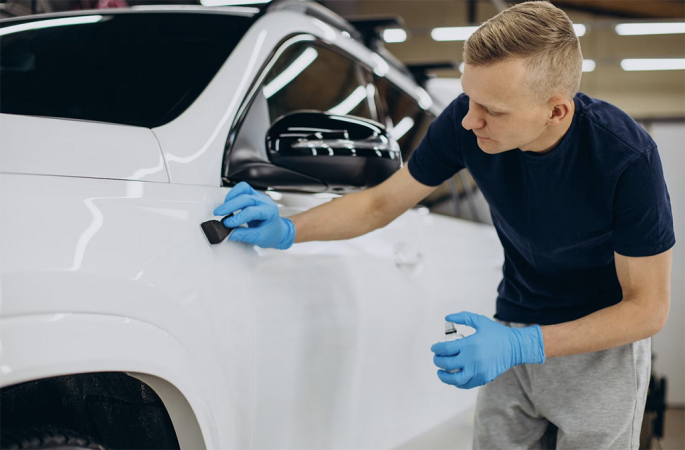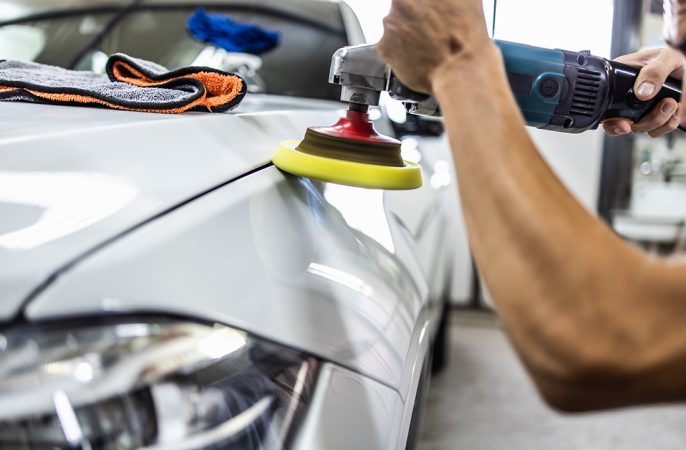
Car detailing is a meticulous process of cleaning and enhancing the appearance of a vehicle to a level that surpasses regular washing and cleaning. It involves not only the exterior but also the interior of the vehicle, ensuring it looks brand new and well-maintained. To achieve professional results, one needs the right car detailing supplies. From wheels to grills, this guide will walk you through the essential products and tools needed for a top-notch car detailing experience. There is always a benefit of using ceramic coating Sydney one is to increase the resale value of your car.
1. Exterior Cleaning:
a. Car Wash Shampoo: A high-quality car wash shampoo is the foundation of any car detailing process. Look for a pH-balanced, gentle formula that effectively lifts dirt and grime without damaging the paint.
b. Microfiber Wash Mitts and Towels: These are essential for washing the vehicle without causing scratches. Microfiber is gentle on the paint surface and absorbs dirt effectively.
c. Wheel Cleaner: Specific wheel cleaners are necessary to tackle the brake dust and road grime that accumulates on wheels. Opt for a product that’s safe for your type of wheels, whether they’re alloy, chrome, or painted.
d. Clay Bar: This handy tool is used to remove contaminants embedded in the paint, such as tar, tree sap, and industrial fallout. It leaves the surface smooth and ready for polishing and waxing.
e. Car Polish: Polish helps to remove minor imperfections and swirl marks from the paint, restoring a deep shine. There are different types of polish based on the severity of the imperfections.
f. Car Wax or Sealant: Wax or sealant provides a protective layer to the paint, shielding it from UV rays, contaminants, and water. Choose between natural carnauba wax for a warm glow or synthetic sealants for longer-lasting protection.
2. Interior Cleaning:
a. Interior Cleaner: Look for an all-purpose interior cleaner that can handle various surfaces like plastic, vinyl, leather, and fabric. It should be effective in removing stains and grime without causing damage.
b. Microfiber Towels: Soft, lint-free microfiber towels are essential for cleaning interior surfaces without leaving scratches or streaks.
c. Detailing Brushes: These are perfect for getting into crevices and hard-to-reach areas like vents, buttons, and seams.
d. Vacuum Cleaner: A powerful vacuum cleaner will help in removing dust, dirt, and debris from carpets, upholstery, and floor mats.
e. Glass Cleaner: Choose a streak-free glass cleaner to make your windows and mirrors crystal clear.
3. Tire Care:
a. Tire Dressing: Tire dressings not only add shine to the tires but also protect them from cracking and fading due to UV exposure.
b. Tire Brush: A sturdy tire brush will help you scrub the sidewalls effectively.
4. Miscellaneous:
a. Applicators: Foam or microfiber applicators are useful for applying polish, wax, and sealant to the car’s surface.
b. Spray Bottles: Use spray bottles to create custom mixtures of cleaning solutions or water for various detailing tasks.
c. Grit Guard: Placing a grit guard at the bottom of your wash bucket helps to prevent dirt and debris from being transferred back to your wash mitt, reducing the risk of scratches during the washing process.
d. Drying Towels: High-quality drying towels made of microfiber or chamois will safely dry the car’s surface without causing scratches or swirls.
Remember, investing in quality car detailing supplies will not only give you better results but also protect your vehicle’s surfaces from unnecessary wear and tear. Additionally, always follow the manufacturer’s instructions and consider the specific needs of your vehicle when selecting products.
In conclusion, detailing your car can be a rewarding experience when armed with the right tools and supplies. From cleaning the wheels to polishing the grills, a thorough car detailing process will not only maintain your vehicle’s value but also bring out its true beauty, making you fall in love with your ride all over again. Click here to check the quality of detailed car.

